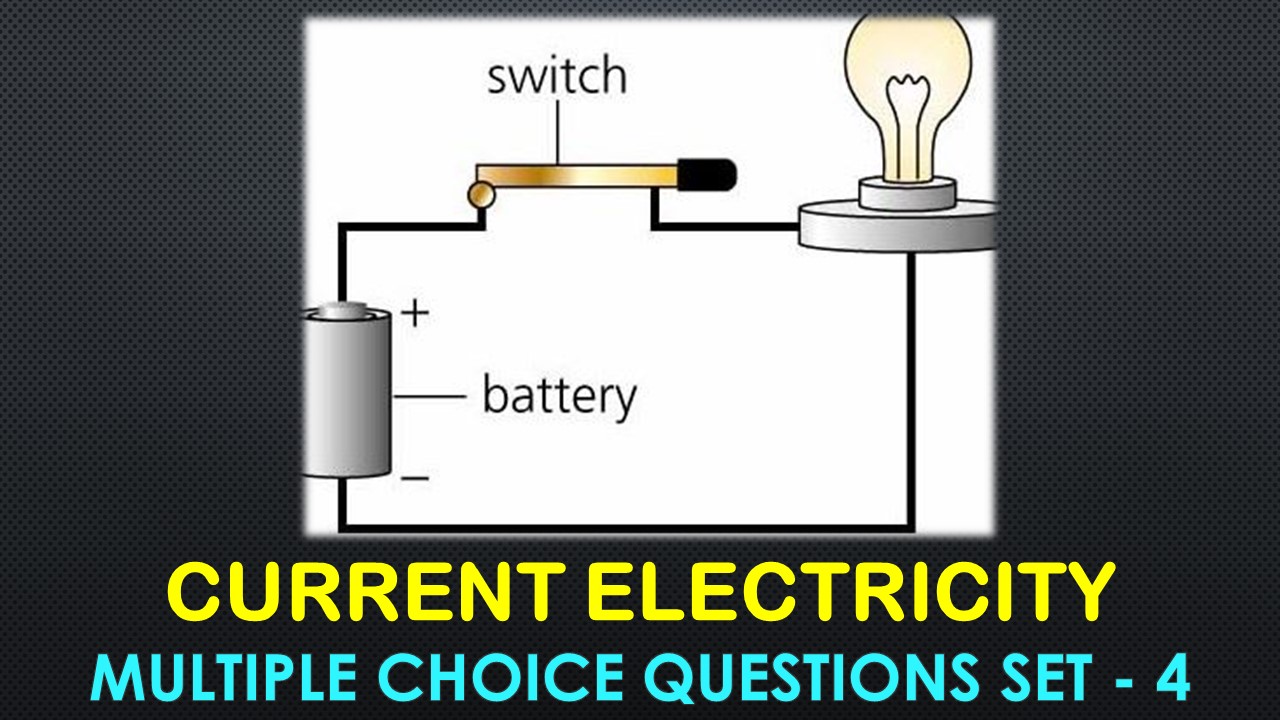CBSE Class 12 Current Electricity Multiple Choice Questions with Answers. MCQ Questions Class 12 Current Electricity with Answers Is Prepared Based on Latest Exam Pattern. Students can solve NCERT Class 12 Current Electricity MCQs with Answers to know their preparation level.
Students who are searching for NCERT MCQ Questions for Class 12 Current Electricity with Answers are compiled here to get good practice on all fundamentals. Know your preparation level on MCQ Questions for Class 12 Current Electricity with Answers. You can also verify your answers from our provided MCQ Class 12 Current Electricity with Answers. So, ace up your preparation with MCQ of Class 12 Physics Examinations.
MCQ Questions Class 12 Current Electricity with Answers - Set - 4
Question 1:
E.M.F. is measured in :
(a) joule
(b) joule/coulomb
(c) joule-coulombs
(d) joule/coulomb/metre
Correct Answer – (B)
Question 2 :
Ohm’s law is valid when the temperature of conductor is :
(a) very low
(b) very high
(c) varying
(d) constant
Correct Answer – (D)
Question 3 :
Why is the Wheatstone bridge more accurate than other methods of measuring resistances: ‘
(a) It is a null method
(b) It is based on Kirchhoffs laws
(c) It has four resistances
(d) It does not involve ohm’s law
Correct Answer – (A)
Question 4 :
When three identical bulbs of 60 W, 200 V rating are connected in series to a 200 V supply, the power drawn by them will be:
(a) 20 W
(b) 60 W
(c) 180 W
(d) 10 W
Correct Answer – (A)
Question 5 :
The length and radius of an electric resistance of a certain wire are doubled simultaneously, then the:
(a) resistance will be doubled and specific resistance will be halved
(b) resistance will be halved and specific resistance will remain uncharged
(c) resistance will be halved and the specific resistance will be doubled
(d) resistance and specific resistance will both remain uncharged
Correct Answer – (B)
MCQ Questions Class 12 Current Electricity with Answers
Question 6 :
The emf of a car battery is about:
(a) 2.5 V
(b) 4.5 V
(c) 8.6 V
(d) 12 V
Correct Answer – (D)
Question 7 :
A potential difference of 10 V is applied across a conductance of 2 S. The current in the conductor will be :
(a) 20 A
(b) 5 A
(c) 0.2 A
(d) None of these
Correct Answer – (A)
Question 8 :
n resistances, each of R Ω, are connected in parallel gives an equivalent resistance of R Ω. If these resistances were , connected in series, the combination would have a resistance in Ω is equal to
(a) n²R
(b) R/n²
(c) R/n
(d) nR
Correct Answer – (A)
Question 9 :
A galvanometer acting as a volt meter will have with its coil.
(a) a high resistance in parallel
(b) a high resistance in series
(c) a low resistance in parallel
(d) a low resistance in series
Correct Answer – (B)
Question 10 :
A 5 A fuse wire can with stand a maximum power of 1 W in circuit. The resistance of the fuse wire is:
(a) 0.2 Ω
(b) 5 Ω
(c) 0.4 Ω
(d) 0.04 Ω
Correct Answer – (D)
- NCERT Solutions Class 11 Chemistry Chapter 1 : Some Basic Concepts of Chemistry
- NCERT Solutions Class 11 Chemistry Chapter 2 : Structure Of The Atom
- NCERT Solutions Class 11 Chemistry Chapter 3 : Classification of Elements and Periodicity in Properties
- NCERT Solutions Class 11 Chemistry Chapter 4 : Chemical Bonding and Molecular Structure
- NCERT Solutions Class 11 Chemistry Chapter 5 : States of Matter
- NCERT Solutions Class 11 Chemistry Chapter 6 : Thermodynamics
- NCERT Solutions Class 11 Chemistry Chapter 7 : Equilibrium
- NCERT Solutions Class 11 Chemistry Chapter 8 : Redox Reactions
- NCERT Solutions Class 11 Chemistry Chapter 9 : Hydrogen
- NCERT Solutions Class 11 Chemistry Chapter 10 : The s-Block Elements
- NCERT Solutions Class 11 Chemistry Chapter 11 : The p-Block Elements
- NCERT Solutions Class 11 Chemistry Chapter 12 : Organic Chemistry: Some Basic Principles and Techniques
- NCERT Solutions Class 11 Chemistry Chapter 13 : Hydrocarbons
- NCERT Solutions Class 11 Chemistry Chapter 14 : Environmental Chemistry




